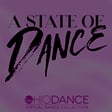
Writing and Dancing with Ann Cooper Albright
Ann Cooper Albright is the author of How to Land: finding ground in an unstable world which offers ways of thinking about and dealing with the uncertainty of our contemporary lives; Engaging Bodies: The Politics and Poetics of Corporeality; Modern Gestures: Abraham Walkowitz Draws Isadora Duncan Dancing; Traces of Light: Absence and Presence in the Work of Loïe Fuller; and Choreographing Difference the Body and Identity in Contemporary Dance. She is founder and director of Girls in Motion, an award winning afterschool program at Langston Middle School and co-director of Accelerated Motion: Towards a New Dance Literacy, a digital collection of materials about dance. Albright is also a veteran practitioner of contact Improvisation, has taught workshops internationally, and facilitated Critical Mass: CI @ 50 which brought 300 dancers from across the world to learn, talk, and dance together in celebration of the 50th anniversary of this extraordinary form. The book, Encounters with Contact Improvisation, is the product of one of her adventures in writing and dancing with others. Her work has been supported by the NEA, NEH, ACLS, The Guggenheim Foundation, and the Ohio Arts Council.
OhioDance A State of Dance is a six-part series coming out the fourth Friday of each month through November 2025. This podcast is driven by the OhioDance mission to secure the foothold of dance in Ohio through increasing visibility, firming viability, and elevating the position of dance in Ohio.
In 2016, a five-person team set out on a mission to capture the achievements of persons and institutions who have shaped the intricate diversity of dance history and practice within the state of Ohio and weave them together in an easily accessible digital format. This we call the OhioDance Virtual Dance Collection. As of 2025 we have highlighted 42 individuals and institutions. The team has traveled over 5000 miles and interviewed hundreds of individuals in all five regions of Ohio. vdc.ohiodance.org
If you like what you are listening to and are not a member of OhioDance, you can go to ohiodance.org and click the membership button to join and receive the many benefits that come with your membership. You can also donate through our purple donate button.




